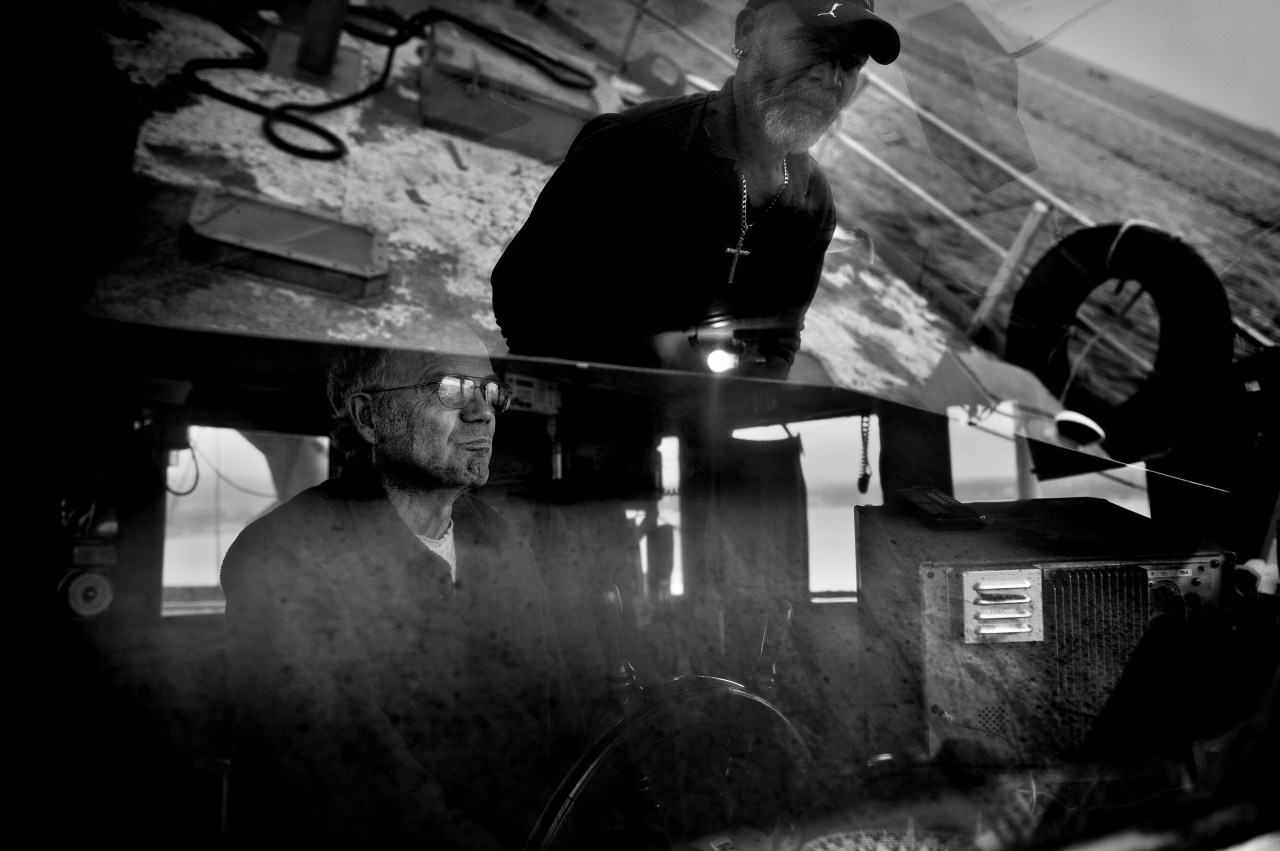The waters off the exposed and windswept coasts of Newfoundland and Nova Scotia have been home to swordfish hunting for centuries, a practice that came under threat after the introduction of nylon string to the industry in the 1950s. With the strength of nylon, fishermen are able to bait on 30- to 40-mile-long lines, which can hold over 1,000 hooks at a time. This style of fishing quickly became the industry standard, and by the late 1990’s swordfish populations were nearing collapse due to overfishing. After steep regulations and conservation efforts, environmental groups say populations are back on the rise and that swordfish is once again sustainable for fishing.
Photographer Andrew Testa set out on the North Atlantic to witness the harsh, salt-sprayed realities of swordfish hunting. He boarded the Seneca, a commercial swordfishing trawler, as it skirted through coastal communities and the deep Atlantic in search of prey. Through choppy seas and long stints of boredom, Testa captures a way of life dependent on maintaining swordfish populations.









